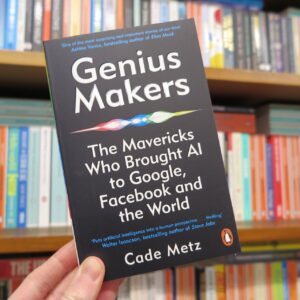Author: James V Stone
In the rapidly evolving landscape of artificial intelligence, where breakthroughs and advancements seem almost commonplace, James V Stone’s “Artificial Intelligence Engines” stands out as a comprehensive and accessible guide to the mathematical foundations of deep learning. Aimed at beginners and intermediates in the field of AI, this book seamlessly blends informal explanations with detailed mathematical analyses, providing readers with a solid understanding of the algorithms powering modern artificial intelligence.
Overview
Stone begins by addressing the human brain’s fundamental advantage over conventional computers: the ability to learn. He then introduces readers to a new generation of artificial intelligence algorithms – deep neural networks. These networks, relying on adaptive algorithms, have showcased super-human performance across a myriad of tasks, from medical diagnostics to game playing.
The book’s strength lies in its ability to demystify complex concepts through clear and concise explanations. Stone takes the reader through historically significant neural networks, such as perceptrons, Hopfield nets, Boltzmann machines, and backpropagation networks. Simultaneously, he explores modern deep neural networks, including variational autoencoders, convolutional networks, generative adversarial networks, and reinforcement learning using SARSA and Q-learning.
Informal Style and Rich Illustrations
One of the book’s standout features is its informal writing style. Stone successfully navigates the delicate balance between technical depth and accessibility. Complex algorithms are introduced in a manner that doesn’t overwhelm, making the book suitable for those with varying levels of technical expertise.
The rich illustrations throughout the book play a crucial role in aiding comprehension. Visualizations of neural network architectures, learning processes, and algorithmic concepts serve as valuable aids for readers seeking a more intuitive grasp of the material. This visual approach is particularly beneficial for beginners trying to bridge the gap between theory and application.
Mathematical Analyses
For those seeking a deeper dive into the mathematical underpinnings of deep learning, Stone provides detailed analyses of key neural network learning algorithms. The book covers a wide spectrum of mathematical concepts, from historical foundations to cutting-edge developments. It does this without losing sight of its target audience. The inclusion of tutorial appendices, such as Bayes’ theorem and maximum likelihood estimation, adds further support. This is for readers aiming to strengthen their mathematical foundations.
Hands-On Experience
To reinforce theoretical concepts, Stone integrates online computer programs from open-source repositories. This hands-on approach allows readers to experiment with neural networks, providing a valuable bridge between theory and practical application. For AI professionals looking to enhance their skill set, these exercises offer a tangible way to implement and experiment with the discussed algorithms.
Comprehensive Glossary and Tutorial Appendices
Recognizing the diverse background of his readership, Stone includes a comprehensive glossary that serves as a quick reference guide to essential terms. This feature proves invaluable for beginners navigating the sometimes intimidating jargon of the AI landscape. Additionally, tutorial appendices on topics like Bayes’ theorem and maximum likelihood estimation offer concise refreshers for those seeking additional clarification.
Teaching Support
With an eye on education, Stone provides PowerPoint slides that align with the content of the book. This inclusion makes “Artificial Intelligence Engines” an ideal resource for instructors looking to incorporate the material into their teaching curriculum. The combination of written content, visual aids, and supplementary materials positions the book as a versatile tool for both self-paced learning and traditional classroom settings.
James V Stone’s “Artificial Intelligence Engines” is a commendable addition to the literature on deep learning. Its strength lies in the author’s ability to communicate complex concepts with clarity and accessibility. This makes it an excellent resource for beginners and intermediate AI professionals. The book balances theoretical depth with practical applications. It provides readers with a holistic understanding of the mathematical engines driving artificial intelligence. Whether used for self-study or as a teaching aid, this book is an asset. It’s for anyone looking to navigate the intricate landscape of modern AI.





